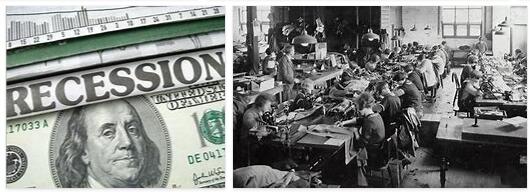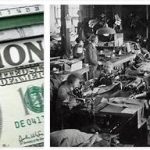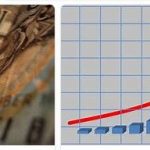Economic Downturn in the West Part II
China is not the only populous country experiencing rapid economic progress. India, with over 1.2 billion inhabitants, has also had a healthy growth in the last 15-20 years (but still lower than China). Together, these two countries make up almost 40 percent of the world’s population. We thus see the emergence of two new economic superpowers that have done, and will continue to do, something with the balance of power in the world economy.
4: The role of the dollar
So far, according to COMPUTERDO, the United States is still the largest and most important economy in the world, with by far the most widely used currency. US dollars are often referred to as the world’s major currency, or reserve currency. In short, this means that the dollar is the most widely used currency globally. Those who have been on holiday in distant and exotic countries often experience that the dollar is a widely accepted means of payment.
A little more specific about the international role of the dollar:
- Nation states, via central banks and savings funds, tend to have significant foreign exchange reserves(including countries with large government debt). An overwhelming proportion of these reserves are in dollars – approx. 60 percent, down from over 70 percent in 2001.
- Trade between countries often takes place in dollars, even when the United States is not involved in trade. (see fig. turnover by currency)
- The currency appears as a foundation in the financial markets. When, for example, Norwegian banks borrow money from each other, they use interest rate instruments derived from the dollar market. In principle, the banks then borrow funds in dollars, and then convert them into Norwegian kroner.
A sign of the role of the dollar in the world economy is that a number of countries are trying to maintain a fixed exchange rate against this currency. The goal of such a strategy is usually to create stability in one’s own finances. Turnover figures from the foreign exchange market also confirm the status of the dollar: Over 80 per cent of all foreign exchange transactions have the dollar as one of two currencies. The second most used currency, the euro, is involved in around 40 per cent of transactions.
5: Consequences for the United States
The dollar’s status creates a number of benefits for the US economy . Perhaps the most important of them is that the US government can easily borrow money from international players at a low interest rate, since US government securities (government debt) are considered a very safe investment. There are two main reasons for this.
- The market for US government securities (government bonds …) is large and liquid. By the latter, it is believed that investors can easily find both buyers and sellers. Those who invest in these fixed income securities can thus feel fairly confident that they will find buyers, should they wish to withdraw.
- The United States has most of its government debt in dollars. The United States is not alone in having debt in its own currency, but in the case of the United States, the share is unusually large . the debt. Then the dollar becomes less valuable, and the debt easier to repay.
Despite this last point, the United States was still close to defaulting on a small part of its debt in the summer of 2011. However, this was more about politics than economics. The background was disagreement between the two major political parties, where the so-called debt ceiling was used as a kind of hostage. The debt ceiling is a self-imposed rule, which is constantly being adjusted, and which says something about how much debt the US government can take up.
A necessary, and normally unproblematic, adjustment of this ceiling instead ended up in a long-running battle between the two parties in 2011. As a result, the US authorities almost ran out of available funds. The incident was dramatic enough that the credit rating agency Standard & Poor’s chose to downgrade its view of the United States’ ability to pay.
Despite this, US debt / government securities are still considered a safe investment object. Precisely for this reason, the US / US government avoids paying a low interest rate on its own loans – far below the interest rates they themselves receive for lending to other countries or institutions. In fact, this difference meant that the US had a positive interest rate flow for several years (interest income was greater than interest expenses), despite the fact that debt is significantly higher than lending. Some argue that the easy access to loans has meant that Americans have long lived beyond their means.













